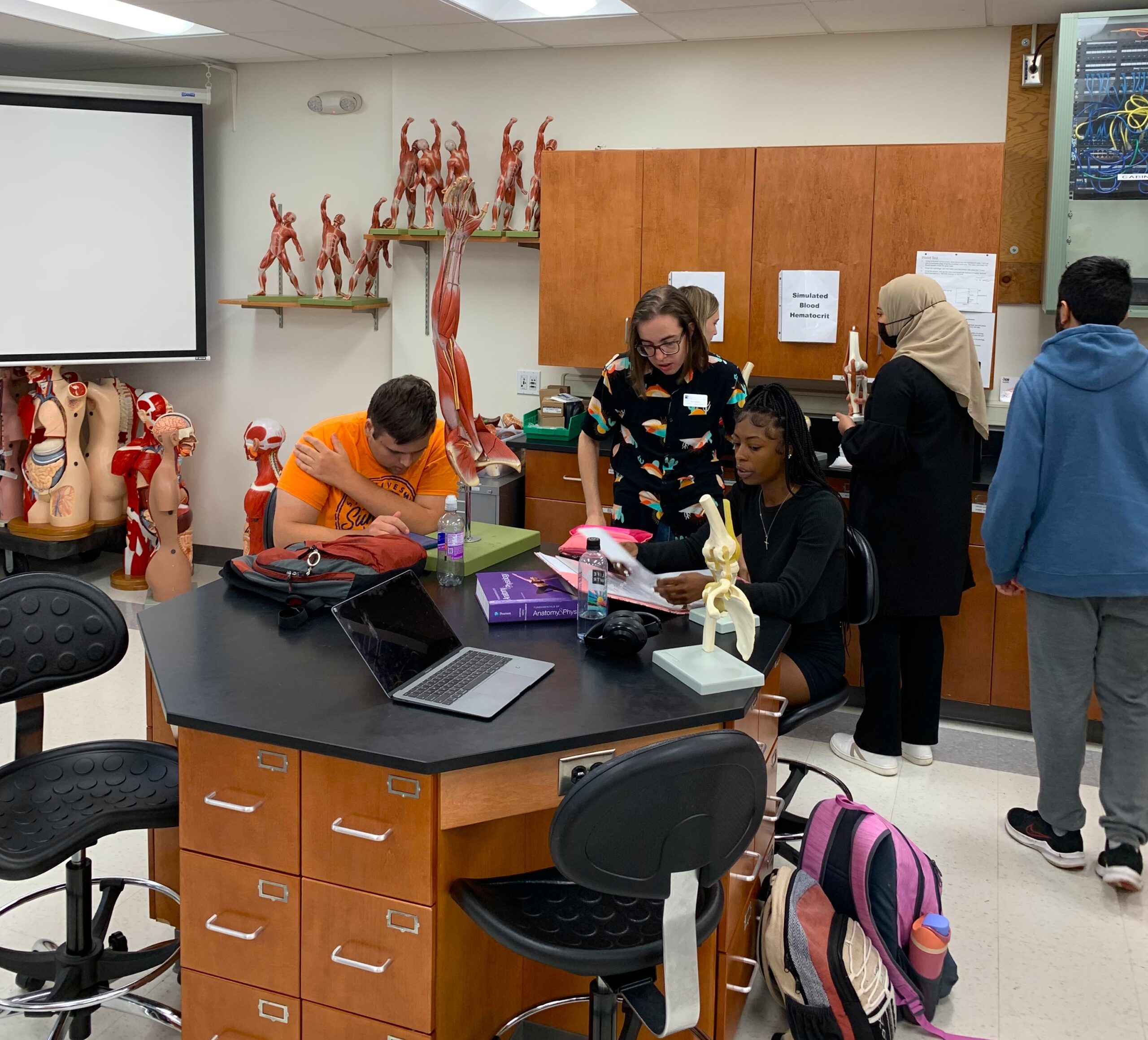professor brings biodiversity to Meramec

Jacob Hight
– Staff Writer
The new reptile and fish exhibit in STLCC – Meramec’s science building will give students, faculty and visitors the chance to experience native Missouri wildlife up close. Jason Allen, conservation, zoology and eco-biology professor, began the project in late May of this year, personally going out into the wilderness to collect animals.
“I actually wanted to have, on hand, living representatives of those groups,” Allen said.
Allen’s background is in ichthyology and herpetology, the study of fish and reptiles respectively.
“It’s really what I have a passion for, and the animals I really like,” Allen said.
Missourians might encounter the species chosen for the exhibit in the wild, or in their own backyards. Though some native species, like garter snakes, play a role in pest management and aren’t a threat to humans, they are killed out of fear.
“I want to emphasize that, mainly, these species are harmless, like the black rat snake that’s out there,” Allen said.
Also displayed are long-ear sunfish, a bull snake, northern fence lizards, and a six-line race runner. Completed, this permanent exhibit may include amphibians, and have eight displays with educational plaques.
However, the exhibit won’t feature mammals. Allen said there are numerous health regulations concerning the exhibition of mammals, and the chance a disease could be passed between mammal species is much greater than the “slight chance” of getting salmonella from reptiles. Invertebrates will also be excluded.
“I guess you could do an insect exhibit, but with the invertebrates you’re not going to have a lot to play with… most people are gonna be like ‘oh, wow, an earthworm,’” Allen said.
Consequently, rodents, insects and worms won’t be found in the cages, except at feeding time.
Some species, such as the long-ear sunfish and rat snake, can expect thawed meals. The fish get bloodworms or fish flakes, while the snakes will get warmed-up mice. Other species can expect food that jumps off their plates, like the crickets that will be fed to the lizards. The snakes will also get an occasional break from re-warmed rodent.
“Once in a while, I do throw live mice in there,” said Allen. “You’ve got to keep the animal stimulated so they don’t lose their instincts.”
The animals displayed require between $50 and $100 a month just in food. All expenses are covered by the biology department’s budget, except for the approximately 30-gallon tanks donated by the Deanery. The cost of the project, so far, is approximately $1500, which includes reviving the display wall and attached workroom.
In the ‘70s and ‘80s, the workroom was used for an exhibit featuring snakes.
“I remember the old days,” said Lillian Seese, math professor, who began teaching in the ‘80s. “It was so much fun to come by and check on on what the snakes were doing.”
Seese said that during the original exhibit, a snake fell from the ceiling onto a former biology secretary’s typewriter.
“She got very aggravated that one of these snakes had gotten free. Well, it turns out this ground used to be a lake… Whenever it rains, the water level rises and the snakes come in the building, so it wasn’t one of the exhibit snakes,” Seese said.
Eventually, the faculty member in charge became too busy to maintain the snakes and gave them to Powder Valley Nature Center. Until now, the room’s display wall has been concealed with bulletin boards and glass cases.
“It’s really nice to see something there again. It’ll be a good source of conversation and community,” Seese said.
Once again, the display nooks are being used to entertain and educate.
“I hope people develop a deeper appreciation for what’s in their natural habitat, and learn a little bit about the animals,” Allen said.











